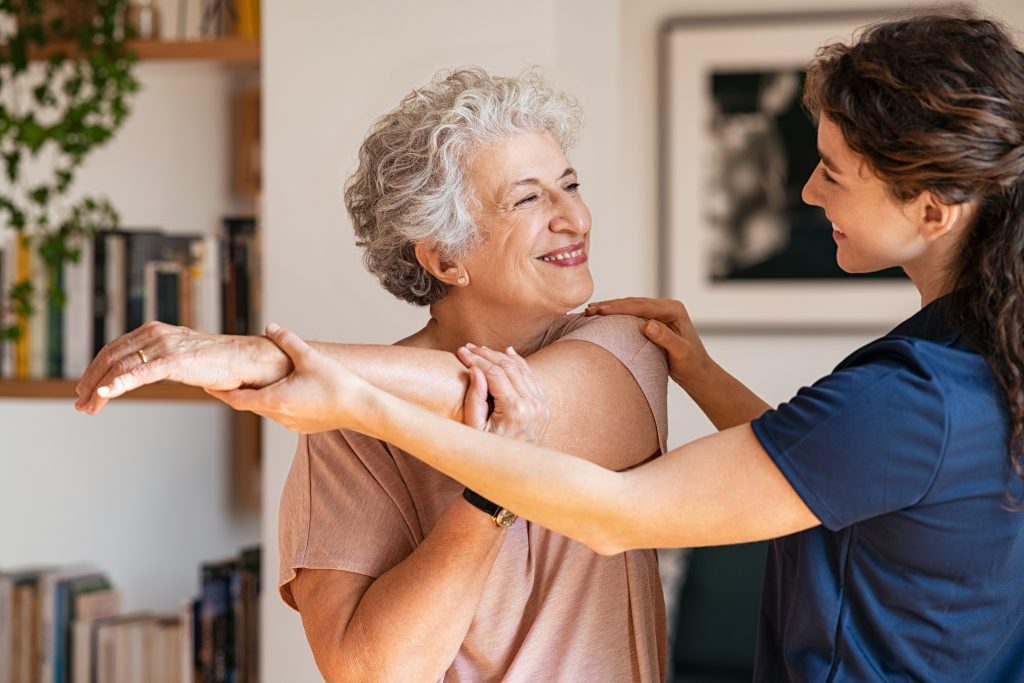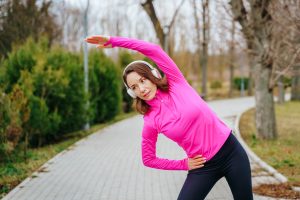4 Healthy Exercise Habits For Seniors To Improve Their Quality Of Life
7 min read
Attention all seniors! Did you know that incorporating healthy exercise habits into your daily routine can significantly improve your quality of life? As we age, physical activity becomes increasingly important for maintaining overall health and wellness. In this article, we will discuss the benefits of exercise for seniors and provide tips on how to implement healthy exercise habits into your life. From improving mental health to reducing the risk of chronic conditions, exercise can positively impact various aspects of senior health. So, let’s get moving and discover how exercise can help you age gracefully and live a happier, healthier life!
What is the Importance of Exercise for Seniors?
Regular exercise is crucial for people of all ages, but seniors stand to benefit greatly from incorporating physical activity into their daily routines. As people age, their bodies begin to experience changes that can lead to a variety of health problems. These problems can include weight gain, reduced mobility, increased risk of falls, and a higher likelihood of developing chronic illnesses such as heart disease and diabetes. By engaging in regular exercise, seniors can improve their quality of life and decrease their risk of physical and mental health issues.
Benefits of Regular Physical Activity
Regular physical activity is essential for seniors to maintain optimal health, improve their quality of life, and prevent chronic conditions. Engaging in exercise routines has numerous benefits for seniors, including positive effects on both physical and mental health.
One of the physical benefits of exercise is the increase in muscle strength and stamina, which can help seniors in performing daily living activities as they age. Additionally, regular physical activity can optimize heart health and help reduce the risk of heart disease, a leading cause of death among seniors. Exercise is also known to increase bone density, which can help prevent fractures and improve overall mobility.
Seniors who engage in regular exercise routines also have a reduced risk of falls. Falls are a significant concern for seniors, and preventative measures such as balance exercises and strength training can help maintain agility and balance, ultimately reducing the risk of falls.
Exercise also has mental health benefits for seniors. It has been shown to reduce the risk of cognitive decline and may even improve cognitive function. Physical activity can also boost mood by reducing symptoms of depression and anxiety.
Seniors who engage in moderate- and vigorous-intensity activity can improve their physical fitness levels, ultimately enhancing their quality of life. Physical health benefits of exercise for seniors include increased flexibility and improved strength in major muscle groups. These benefits help seniors maintain independence, which is vital for their overall well-being.
1. Get Moving and Stay Active
Physical activity is crucial for seniors to maintain optimal health and well-being. Regular exercise can significantly reduce the risk of chronic conditions such as heart disease, diabetes, and stroke, as well as improve balance and prevent falls. Even low-impact activities such as walking, gardening, or swimming can have significant health benefits for seniors.
Aerobic exercise, in particular, is essential for seniors as it can improve cardiovascular health, increase endurance, and boost immunity. Examples of aerobic activities include brisk walking, cycling, or low-impact aerobics classes. Strength training exercises are also crucial for seniors as they can help maintain muscle mass and improve bone density, reducing the risk of fractures. Resistance band exercises, weight lifting, and yoga are excellent forms of strength training exercises.
It’s also essential to incorporate physical activity into everyday activities. Even small changes, such as taking the stairs instead of the elevator or walking to the store instead of driving, can make a significant difference in overall health and well-being.
2. Aerobic Exercise
Aerobic exercise plays a crucial role in a senior’s overall physical and mental health. This type of exercise involves continuous and rhythmic movements that elevate the heart rate and increase the body’s oxygen intake. It can significantly improve cardiovascular health, increase endurance, and boost immunity.
Regular aerobic exercise can also help seniors manage chronic conditions such as heart disease, diabetes, and high blood pressure. It can even reduce the risk of cognitive decline and improve mental health by reducing symptoms of depression and anxiety.
Low-impact activities such as walking, swimming, or cycling are excellent choices for seniors looking to incorporate aerobic exercise into their daily routine. These activities are less likely to cause joint pain or injury and can be tailored to different fitness levels. The recommended duration for moderate-intensity aerobic activity is at least 150 minutes per week, while vigorous-intensity aerobic activity should be performed for at least 75 minutes per week.
It’s important to take steps to minimize the risks of injury when engaging in aerobic exercise. Proper warm-up and cool-down routines can help prevent muscle soreness and injury. Appropriate footwear can also provide proper support and reduce the risk of falls. It’s crucial to monitor for chest pain or other symptoms during exercise and consult with a healthcare provider if any concerns arise.
3. Muscle Strengthening Exercises
Muscle strengthening exercises are crucial for seniors to maintain their muscle strength and overall physical health. These exercises involve resistance training that put a load on the muscles, encouraging them to grow stronger.
There are several forms of strength training exercises, including using weights, resistance bands, or bodyweight exercises. Seniors can use dumbbells or barbells, or even household items such as water bottles or cans as weights. Resistance bands are also a great option as they are lightweight, easy to use, and can be used for a variety of exercises. Bodyweight exercises such as squats, lunges, push-ups, and chair dips are also excellent options as they require no equipment and can be done anywhere.
Seniors can include specific muscle-strengthening activities in their exercise program to improve muscle strength and overall physical health. Activities such as squats, which target the quadriceps, hamstrings, and glutes, can help increase lower body strength. Lunges, which target the same muscles as squats, can also improve balance and mobility. Push-ups, which target the chest, shoulders, and triceps, can help improve upper body strength. Chair dips, which target the triceps, can be done using a chair or a sturdy bench and can also help improve upper body strength.
Regular strength training can bring several benefits for seniors, such as increasing muscle mass, improving bone density, and reducing the risk of falls and chronic diseases. Increasing muscle mass can lead to better balance and mobility, making everyday activities easier and reducing the risk of falls. Strength training can also improve bone density, reducing the risk of osteoporosis. In addition, regular muscle-strengthening activity can reduce the risk of chronic diseases such as heart disease and diabetes.
4. Balance Exercises
Balance exercises are crucial for seniors to improve their stability and reduce the risk of falls and injury. As we age, our balance and coordination tend to decline, making us more prone to falls. By incorporating specific exercises in their exercise program, seniors can improve their balance and coordination and significantly reduce the risk of falls.
One great exercise to improve balance is the single-leg stance. Stand on one leg while holding onto a chair, wall, or other sturdy surface for balance. Hold for 10-30 seconds, and then switch to the other leg. As you improve, try holding onto the support for less time or eventually without support.
Another effective exercise is the heel-to-toe walk. Place one foot directly in front of the other with the heel of one foot touching the toe of the other. This exercise helps to improve balance and stability by challenging the body’s ability to stay on a narrow base of support.
Low-impact exercises, such as Tai Chi, yoga and Pilates, can also be beneficial for seniors as they do not cause strain on the joints and can help to improve balance and stability. Tai Chi, in particular, has been shown to be effective in reducing the risk of falls in older adults.
Additionally, strength training exercises that focus on building the key muscles used in balance, such as the legs, hips and core, can also be included in seniors’ exercise program to help them maintain good balance. Exercises such as leg curls, squats, lunges, and calf raises can help improve leg strength, while planks and side planks can help strengthen the core muscles.
An exercise program that includes regular balance exercises can lead to better coordination and significantly reduce the risk of falls in older adults. By incorporating these exercises into their routine, seniors can improve their overall physical health and maintain their independence and quality of life.
Conclusion
In conclusion, incorporating healthy exercise habits is crucial for seniors to improve their quality of life. Exercise can have a direct and positive impact on physical and mental health, particularly by reducing the risk of developing chronic conditions and falls. Seniors should focus on incorporating aerobic exercise, muscle strengthening exercises, and balance exercises into their fitness program to achieve the best health outcomes. The benefits of exercise for seniors include improving bone density, cognitive function, and reducing the risk of heart disease. By implementing an exercise regimen, seniors can maintain healthy aging and manage chronic health conditions while improving their overall physical and mental health.





